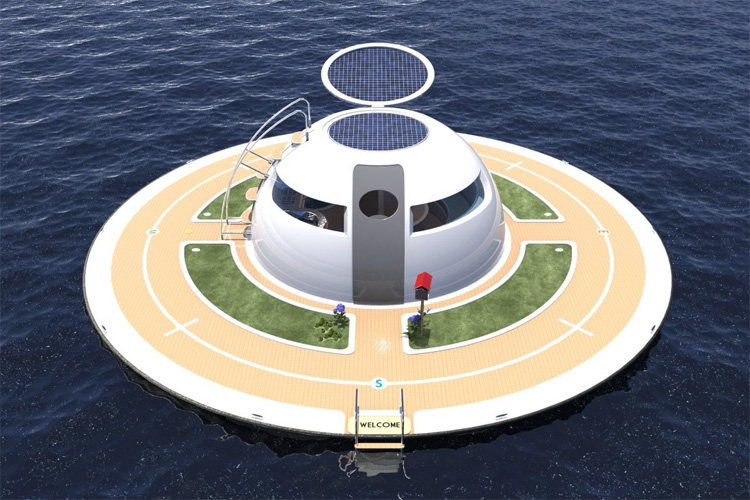An Italian yacht company will build a sustainable floating house that can move around the world.
The UFO, or "Unidentified Floating Object," is a saucer-shaped structure fully equipped with solar panels and wind turbines that will power a water jet-propelled electric motor (80hp) with a maximum speed of 3.5 knots (4 mph, or 6.5 km/h).
Jet Capsule, the company behind UFO, developed an unsinkable houseboat that aims to become the future of aquatic living.
It features a 41-foot deck and collects rainwater or desalinates seawater to provide fresh water to the home and its vegetable garden.
The "Unidentified Floating Object" offers a first-floor interior (dining/living area and kitchen) with 215 square feet and an additional 107 square feet on the lower level (bedroom and bathroom).
The structure has large panoramic windows that provide views of the ocean.
"The main structure of the floating object can be aligned with the compass, keeping the position angle oriented on the desired cardinal direction, even in rough sea conditions," adds the team behind UFO.
Jet Capsule's UFO measures 41 feet (12.5 meters) in diameter, and the two half-spherical shells of fiberglass will allow multiple floor configurations.
The prototype is currently in production, but the "Unidentified Floating Object" will see the light of day soon. The concept of nautical homes will be a reality, as showcased in the movie "Waterworld."
